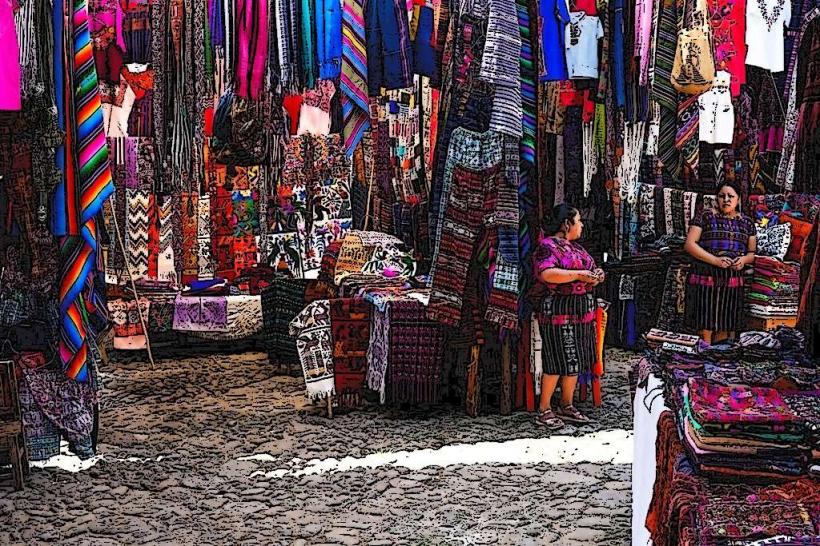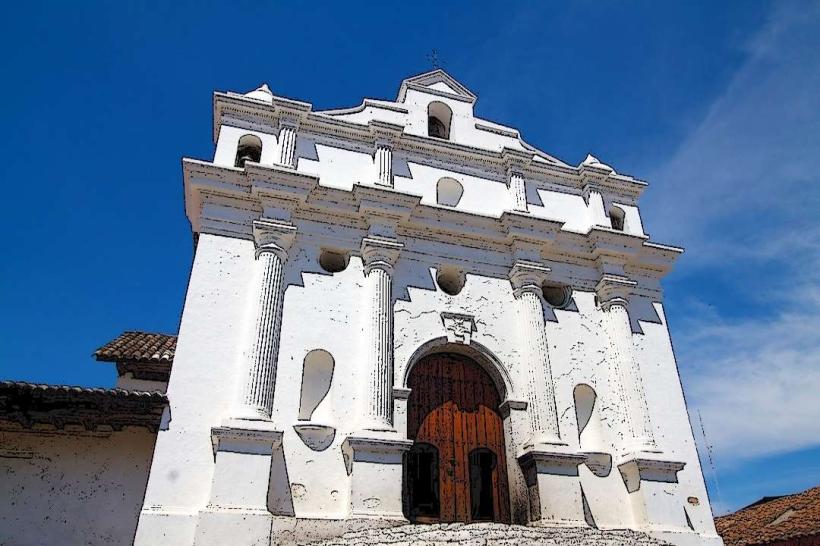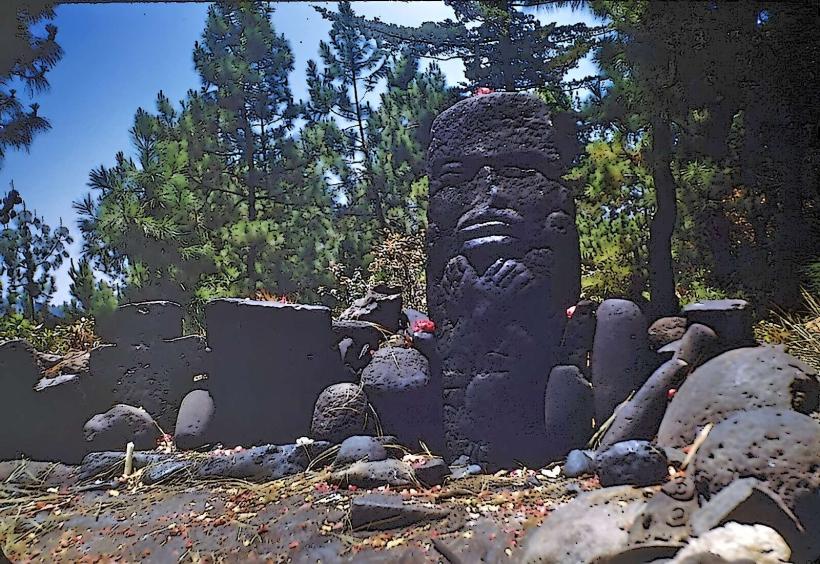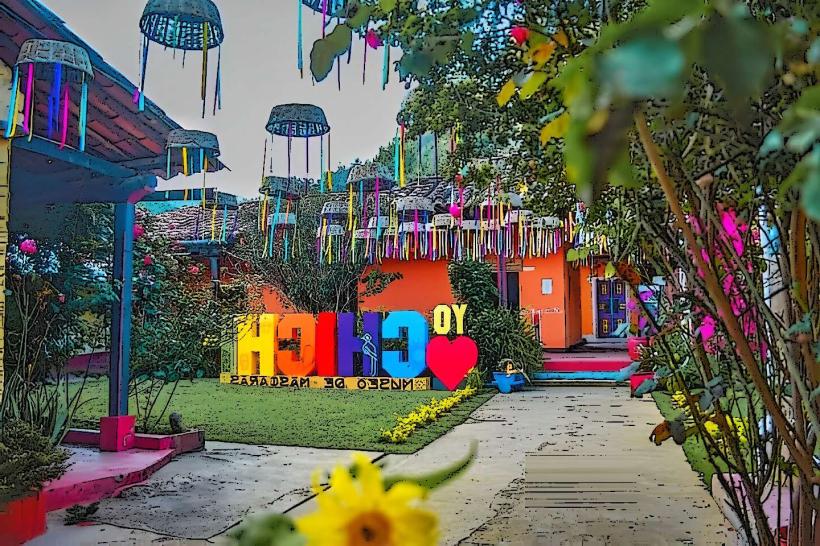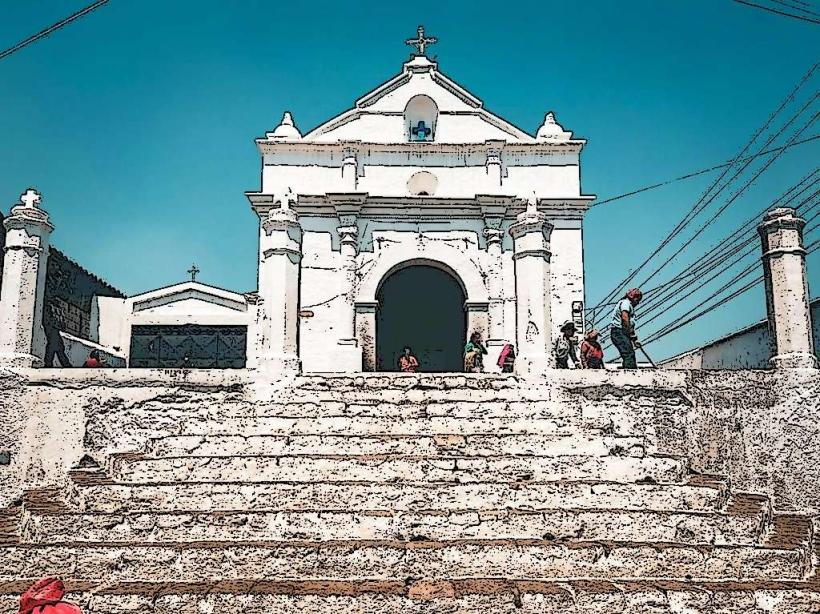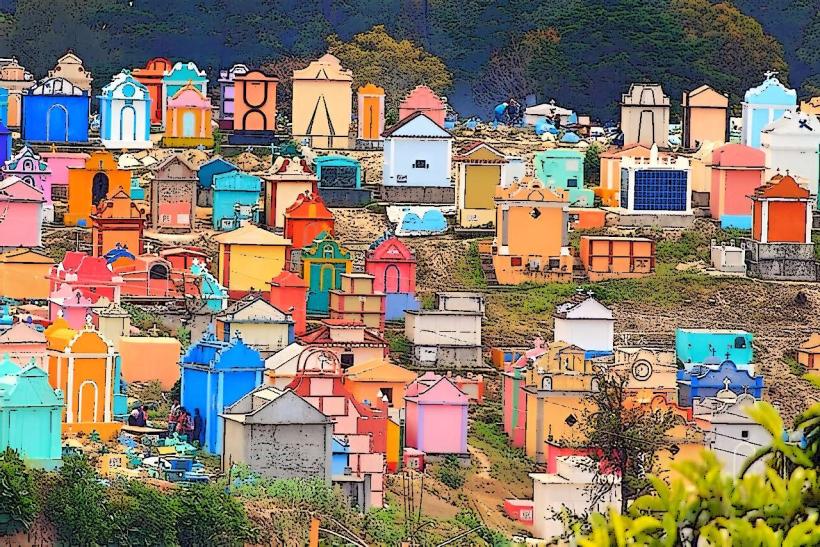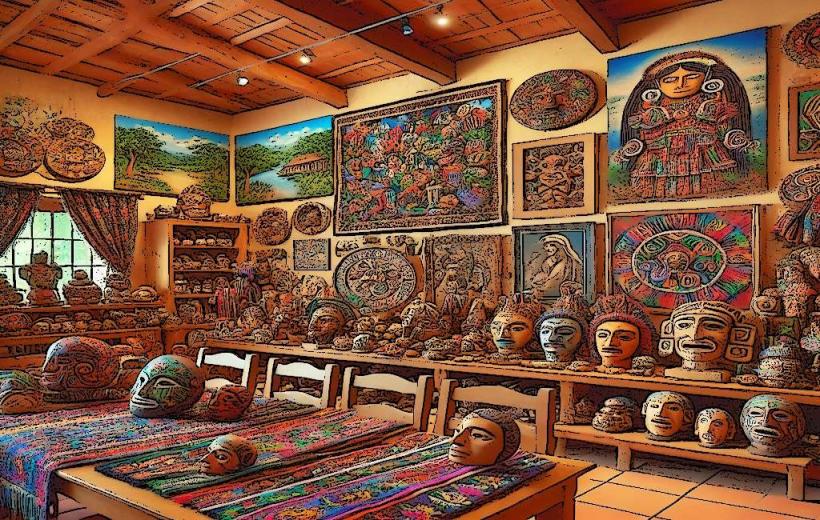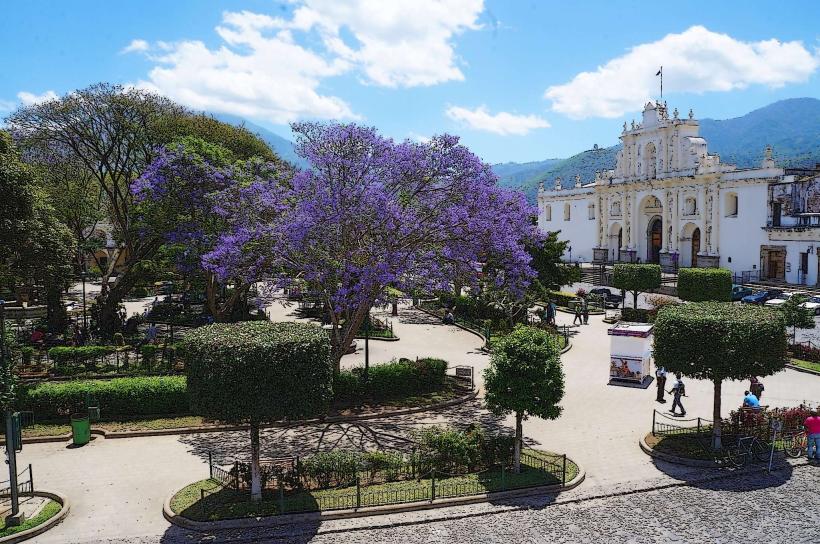Information
City: ChichicastenangoCountry: Guatemala
Continent: North America
Chichicastenango, often simply called Chichi, is a town located in the Quiché Department of Guatemala. It is renowned for its rich indigenous heritage, colorful markets, and vibrant traditions. The town is situated in the highlands of Guatemala, about 140 kilometers (87 miles) from Guatemala City and is one of the country's most famous cultural and economic centers for the indigenous K'iche' Maya people.
Geography and Climate
Chichicastenango sits at an elevation of around 2,000 meters (6,500 feet) above sea level, providing it with a temperate climate. The weather is generally cool, especially in the evenings, with daytime temperatures ranging from 18°C to 25°C (64°F to 77°F). The town experiences a rainy season from May to October and a dry season from November to April.
The surrounding landscape is mountainous and lush, with forests and fertile agricultural land. The town is located in the heart of the K'iche' Maya region, and its surroundings include beautiful valleys and highlands, offering stunning views of the nearby mountains and volcanoes.
History
Chichicastenango has a long and fascinating history that dates back to the time of the Maya civilization. The town was once known as Siyaj K'ak' and was an important settlement for the K'iche' Maya. The area around Chichicastenango was home to several major Maya cities before the Spanish arrived in the 16th century. It became a site of significant cultural and political importance, especially under Maya rulers.
After the Spanish conquest of Guatemala, Chichicastenango became a center for both indigenous and Catholic traditions. The Spanish built a church on top of a pre-Hispanic Maya temple, the remains of which can still be seen today, symbolizing the blending of the two cultures. Over time, Chichicastenango has remained a stronghold of indigenous culture, and many of its traditions, languages, and customs have survived through the centuries.
Urban Structure and Development
Chichicastenango is a relatively small town with a population of around 50,000. The town’s urban structure reflects its Maya heritage, with narrow, cobbled streets and brightly colored buildings. Most of the buildings are modest in size, and many have been built using traditional materials such as adobe and stone. The town’s architecture showcases a fusion of indigenous Maya and Spanish colonial styles.
The central square of Chichicastenango, Plaza Mayor, is the focal point of the town, where locals and visitors gather daily. Surrounding the square are the Iglesia de Santo Tomás, a Catholic church built on the site of a former Maya temple, and a bustling market that draws visitors from all over the world.
Economy
The economy of Chichicastenango is mainly based on agriculture and tourism, with the market playing a crucial role in both. The town is an important regional market hub for the surrounding indigenous communities, and its economy benefits greatly from the sale of handicrafts, textiles, and agricultural products.
- Market: The Chichicastenango market is one of the largest and most famous in Guatemala. Held on Thursdays and Sundays, the market is a vibrant and colorful place, where vendors sell a wide variety of goods, including handwoven textiles, masks, wooden carvings, pottery, jewelry, and traditional clothing. The market is a significant source of income for many local artisans, many of whom are indigenous Maya people.
- Agriculture: The surrounding highlands are fertile and support the cultivation of crops such as corn, beans, vegetables, and coffee. Traditional farming methods are still widely used in the area, and agricultural products are sold in the local market.
- Tourism: Chichicastenango is a key tourist destination, attracting visitors from around the world who come to explore the town’s cultural heritage, visit the market, and experience the local traditions. Many tourists also come to the area to hike in the nearby mountains or visit surrounding villages.
Demographics and Culture
The population of Chichicastenango is predominantly indigenous Maya, with the K'iche' Maya being the dominant ethnic group. The town has maintained its indigenous traditions and customs, and the Maya culture is an integral part of daily life.
Many of the locals speak K'iche', a Maya language, in addition to Spanish, though Spanish is the primary language for communication with outsiders. The people of Chichicastenango are known for their warm hospitality, and visitors are often welcomed into their homes and communities.
Religious practices in Chichicastenango are a fascinating blend of Maya spirituality and Catholicism. The Iglesia de Santo Tomás, for example, is a place where both indigenous rituals and Catholic ceremonies are held side by side. Maya priests, known as Ajq'ij, still perform traditional ceremonies in the church and at various sacred sites, making Chichicastenango a unique location where indigenous spirituality and Catholicism coexist.
The town also hosts several cultural festivals and religious celebrations throughout the year, such as the Semana Santa (Holy Week) processions and the Fiesta de Santo Tomás, which is held every December in honor of the town’s patron saint. During these festivals, you can see traditional Maya dances, rituals, and ceremonies, along with Catholic religious events, making it a vibrant and colorful time to visit.
Tourism and Attractions
Chichicastenango is a popular destination for both cultural and adventure tourism. Some of the main attractions include:
- Chichicastenango Market: The market is the heart of the town and one of the largest and most famous in Central America. It is a must-visit for those wanting to buy traditional handicrafts, textiles, and other goods. The market is held twice a week, on Thursdays and Sundays, when vendors from surrounding villages gather to sell their wares.
- Iglesia de Santo Tomás: This historic church is a blend of Catholic and Maya influences. Built in the 16th century on the site of a former Maya temple, the church is a place of great religious and cultural significance. Visitors can see local Maya people performing rituals, lighting candles, and offering incense at the church, reflecting the fusion of indigenous spirituality and Catholicism.
- Pascual Abaj: A sacred Maya site located on the outskirts of Chichicastenango, Pascual Abaj is a mountain where Maya spiritual ceremonies are performed. It’s a place of deep religious significance, where local shamans conduct offerings and rituals to the gods.
- Cultural Festivals: Chichicastenango is known for its vibrant religious festivals, such as the Fiesta de Santo Tomás in December, which features traditional dances, music, and ceremonies. The town also celebrates Semana Santa (Holy Week) with elaborate processions and celebrations, drawing large crowds.
- Surrounding Villages: The surrounding villages around Lake Atitlán and the Altiplano offer opportunities for hiking, cultural exploration, and experiencing life in traditional Maya communities.
Transportation
Chichicastenango is accessible from Guatemala City, Panajachel, and other major towns in the highlands. The town can be reached by bus, shuttle, or private vehicle. Travel time from Guatemala City to Chichicastenango is about 2.5 to 3 hours, and from Panajachel, it’s around 1.5 hours by road.
- Public Transportation: Buses and shuttle services are available from major cities like Guatemala City and Panajachel. Local taxis are also available for transport around the town.
- Boats: While Chichicastenango is not located directly on Lake Atitlán, nearby towns like Panajachel offer boat rides to other villages around the lake.
Social and Security Situation
Chichicastenango is generally considered a safe town for travelers, though, as in any tourist area, visitors should exercise caution, particularly in crowded areas like the market. Petty theft and pickpocketing can occur, so it is advisable to keep personal belongings secure. The local community is friendly and welcoming, and the town is used to tourists visiting for cultural and market experiences.
Environmental Concerns
Chichicastenango, like many towns in the Guatemalan highlands, faces environmental challenges such as:
- Waste Management: Increased tourism has led to waste and pollution concerns, especially in the market area. Efforts are being made to improve waste management practices.
- Deforestation: The surrounding area is home to rich forests and biodiversity, but deforestation due to agriculture and development is a concern. There are ongoing efforts to conserve natural areas around Chichicastenango and promote sustainable farming practices.
Conclusion
Chichicastenango is a vibrant town full of history, culture, and tradition. It provides a unique opportunity to experience the blending of Maya spirituality and Catholicism, as well as to witness indigenous customs that have been preserved for centuries. With its famous market, religious festivals, and surrounding natural beauty, Chichicastenango is a must-visit destination for those wanting to immerse themselves in Guatemala’s rich cultural heritage.

